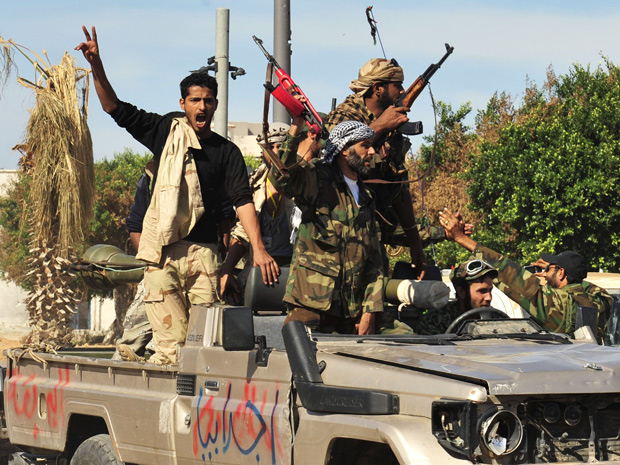Mob Rule Comes to Libya

If there was any doubt in my mind that the so-called Arab Spring was nothing more than a backdrop to a long winter freeze, that doubt was set aside by the gory scenes of the death of Col. Gaddafi, played again and again on TV networks. The mad dog of the Middle East was dead, but not before he was captured alive and subject to mob justice and public lynching that have become part of Arab heritage for the last 1,400 years.
For me this was the turning point. Had the captors of Gaddafi arrested the butcher of the Libyan people and subjected him to a public trial, I would have said the Arab Spring has blossomed and that rule of law, the essence of contemporary civilization, had finally arrived for the Arabs to savor.
Too bad. It seems the course the Arabs have chosen in dealing with their oppressive dictatorships has little to do with individual liberty, rule of law or a sense of justice.
Gaddafi's extra-judicial killing reminded me of my childhood when another slaughter in the Arab World unfolded. It was July 14, 1958 and the Iraqi army under the command of Col. Abdel-Karim Qasim marched on the royal palace in Baghdad to stage a military coup to end the monarchy and establish a republic.
King Faisal II had read the writing on the wall so he ordered the palace guard to offer no resistance. Before dawn, he surrendered himself to the insurgents and the palace guard lay down their arms. The peaceful surrender was not enough to satiate the bloodlust of the Iraqi army officers.
As the Baghdad morning sun rose, the King, his Crown Prince Abd'allah and several members of the royal family, including women and children, were asked to gather in the palace courtyard from where they were told they would be transported to the prison. However, when the family reached the open space, they were met by machine-gun fire. Reports say the bodies of the king were dragged through the streets of Baghdad and in the bizarre custom of the Arab world, people fired their guns in the air to celebrate a massacre.
Gaddafi and Faisal II are not alone. The custom of mass slaughter at the time of a coup has its roots in Arab heritage that goes back to the successors of Prophet Muhammad, but best exemplified in the year 750CE that marked the end of Islam's first century and dynasty, the caliphate of the Ummayads.
Even after the takeover in Damascus, the new Abbasid caliph was worried. Remnants of the deposed Umayyad family were still alive and he feared they might strike back. To lure them into a trap, Caliph Abu al-Abbas declared amnesty for all surviving members of the deposed caliph's family. After the first round of massacres, the survivors had gone into hiding. The caliph sent out the message that all Umayyads were welcome to a grand reconciliation dinner party. Except for Abd al-Rahman I, grandson of the Caliph Hashim, they all fell for the ruse and were slaughtered as they sat down to eat dinner. It is reported that even as the dead and wounded lay bleeding on the floor of the caliph's court, Abu al-Abbas ordered that dinner be served and the revelries of the victorious continued amid the groans of the dying.
Those who escaped were rounded up. Marwan II, who had escaped Damascus and taken refuge in Egypt, was discovered in his hiding place and put to death. Another nephew of his had a hand and foot chopped off, and in that mutilated state he was put on a donkey with his face blackened, and paraded in humiliation throughout Syria with a herald announcing his arrival, "Behold, Aban, son of Muawiyah, the most renowned cavalier of the House of Omayya." The agony of this man ended only after he was no use to his tormentors and was beheaded.
A millennium and more later, the tradition of extra-judicial killing continues unabated. Yesterday it was the Umayyad caliphs, King Faisal, Col. Gaddafi and many more. Tomorrow, it will be someone else.
Arab Spring? What Arab Spring? It's the same old wine in a new bottle.
Originally Posted at Huffington Post Canada.

